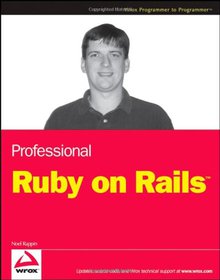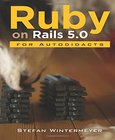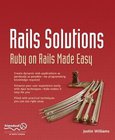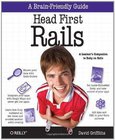Professional Ruby on Rails

Book Details:
| Publisher: | Wrox |
| Series: | Wrox , Professional |
| Author: | Noel Rappin |
| Edition: | 1 |
| ISBN-10: | 047022388X |
| ISBN-13: | 9780470223888 |
| Pages: | 457 |
| Published: | Feb 25 2008 |
| Posted: | Nov 19 2014 |
| Language: | English |
| Book format: | |
| Book size: | 4.4 MB |
Book Description:
Nothing less than a revolution in the way web applications are constructed,Ruby on Rails (RoR) boasts a straightforward and intuitive nature that avoids programming repetition and makes it infinitely easier to build for the web. This book captures the current best practices to show you the most efficient way to build a spectacular web application with RoR. You?ll learn everything you need to know in order to extend Rails so that you can take advantage of the many exciting and wonderful things that are being done by the diligent RoR programming community.
Download Link:
Related Books:
Ruby on Rails 5.0 for Autodidacts
Learn Ruby 2.3 and Rails 5.0
A step by step guide to learn Ruby on Rails 5.0. It includes a basic tutorial for Ruby 2.3 and is written for programmers who know at least one other programming language and are familiar with HTML. It covers Active Record, Scaffolding, REST, Routing, Bundler, Test Driven Development, Cookies, Sessions, Action Mailer, I18n, Asset Pipeline, JavaScript, Caching, Templates and of course the new 5.0 features Action Cable and Active Job....
Rails Solutions
Ruby on Rails Made Easy
If you're a web designer or developer who thinks that the coding involved in developing dynamic web applications is too difficult, think again. This book, and the framework it covers, is the perfect solution to your needs. Ruby on Rails provides an easy-to-use method for quickly developing web applications, simplifying potentially complicated subjects such as web architecture, JavaScript, and SQL/database creation. The simplicity of Rails belies its power, thoughthis technology is used by major companies such as 37Signals and Google. The book provides an introduction to Ruby on Rails with the web designer in mind. Instead of focusing on the intricate syntax of each method, the book focuses on the tasks youll want to perform on your website and then w...
Head First Rails
A Learner's Companion to Ruby on Rails
Ready to transport your web applications into the Web 2.0 era? Head First Rails takes your programming -- and productivity -- to the max. You'll learn everything from the fundamentals of Rails scaffolding to building customized interactive web apps using Rails' rich set of tools and the MVC framework. By the time you're finished, you'll have learned more than just another web framework. You'll master database interactions, integration with Ajax and XML, rich content, and even dynamic graphing of your data -- all in a fraction of the time it takes to build the same apps with Java, PHP, ASP.NET, or Perl. You'll even get comfortable and familiar with Ruby, the language that underpins Rails. But you'll do it in the context of web programming, and not thr...
2007 - 2021 © eBooks-IT.org



